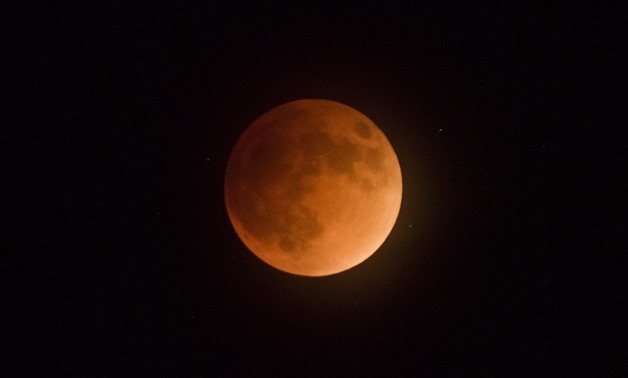
Blood Moon Sky Night Super Moon Full Eclipse - Freegreatpicture/Nikon D810
CAIRO – 30 January 2018: Once in a blue moon, you have the chance to see a supermoon. On Wednesday there will be a once in a lifetime chance to capture the super blue blood moon, and Egypt Today gathered six spots in Egypt to witness the event.
“The January 31 full moon is special for three reasons: it’s the third in a series of 'supermoons', when the moon is closer to earth in its orbit ̶̶̶– known as perigee – and about 14 percent brighter than usual. It’s also the second full moon of the month, commonly known as a 'blue moon'. The super blue moon will pass through earth’s shadow to give viewers in the right location a total lunar eclipse. While the moon is in the earth’s shadow, it will take on a reddish tint, known as a 'blood moon',” according to NASA.

Areas of the world that will see the Jan. 31, 2018, total lunar eclipse. The eclipse will be visible Jan. 31 in the morning before sunrise for North America, Alaska and Hawaii. Observers in the Middle East, Asia, eastern Russia, Australia and New Zealand will see it during moonrise the evening of Jan. 31. – Photo courtesy of NASA
Siwa Oasis
Located in between the Qattara Depression and the Egyptian Sand Sea in the Western Desert, the oasis is about 80 km in length and 20 km wide, with a population of 33,000 people. It has its very own culture and tradition separate from the rest of Egypt, making it the perfect place to witness the spectacle.

Picture taken from Shaly Island in Siwa, Egypt. Siwa Oasis can be seen in the background. Via CC/ Heksamarre
White Desert, Farafra Oasis
At the Farafra Oasis you will find the White Desert, which received its name due to snow-white rocks and sand. It is widely recognized as one of the most popular camping sites in Egypt.

The White Desert - between Farafra and Bahariya oasis - western Egypt. own photo - feb 10, 2005 Via CC BY-SA 2.5
Whales Valley, Fayoum
The Whales Valley is located within the Wadi Rayan protectorate, which covers an area of 1,759 km in Fayoum, only a short two-hour drive away from Cairo. The valley was named after the 10 whales that were in the region approximately 40 million years ago. UNESCO classified the valley as the best World Heritage site for skeletons of whales.

Whale Valley is located within the Wadi Rayan protectorate Via CC/Ahmedherz
Wadi Degla protectorate
Stretching over 30 km in distance and 50 km in height, the Wadi Degla protectorate has been compared to the American Grand Canyon. The protectorate also serves as a home to many animals, such as deers, mountain rabbits, foxes, bats and many more.

Wadi Degla Protectorate Via CC/ Mohammed Said Mohammed
Helwan Observatory
The observatory in Helwan is one of the oldest in the Middle East, having opened in 1903. It is located at the National Research Institute of Astronomy and Geophysics.

Photo courtesy of the official Observatory Facebook account
Kattamya Observatory
The Kattamya Observatory is located on Astronomical Observatory Road. Their mission is to raise awareness about astronomical events and have a year-round astrology calendar. The director of the observatory, Dr. Ahmed Essam, offers lectures on the history of the observatory and the stars.




Comments
Leave a Comment